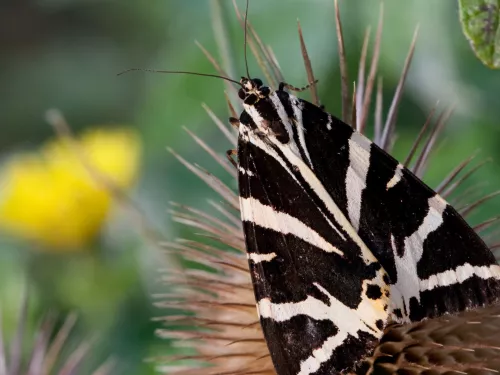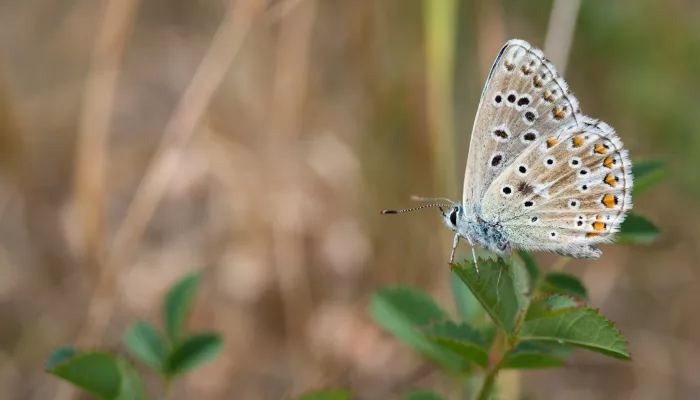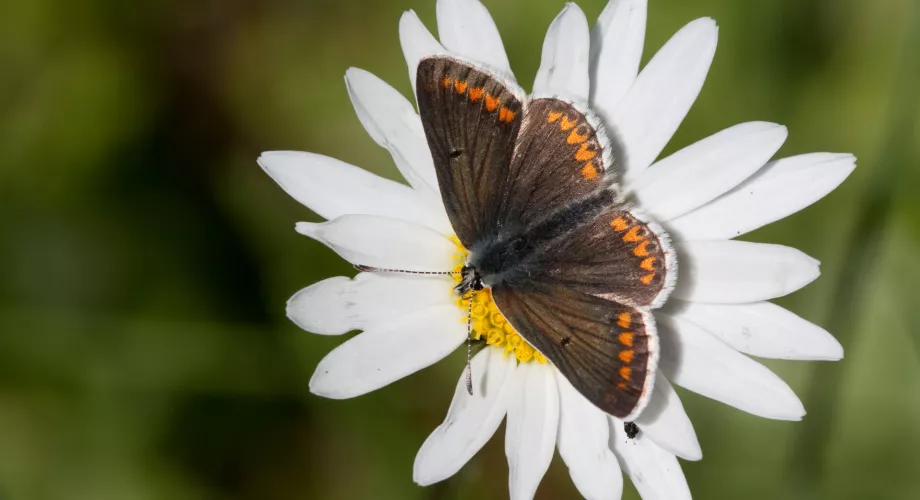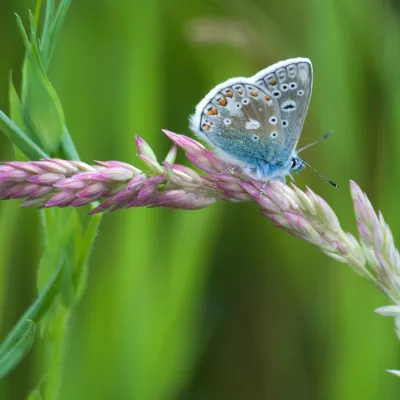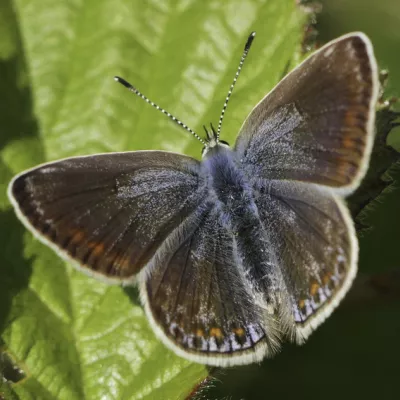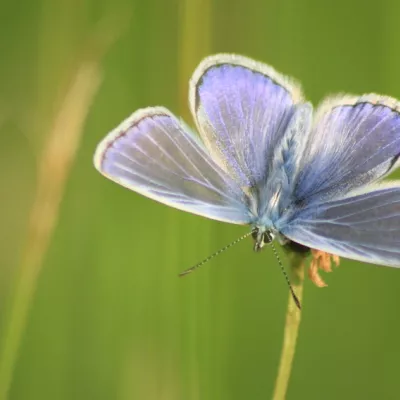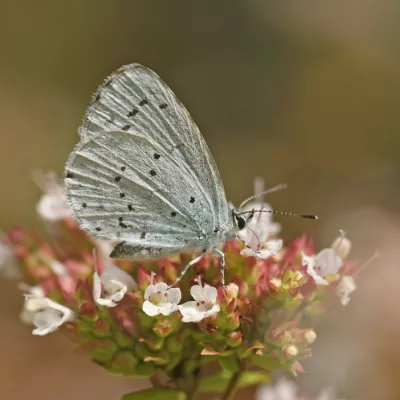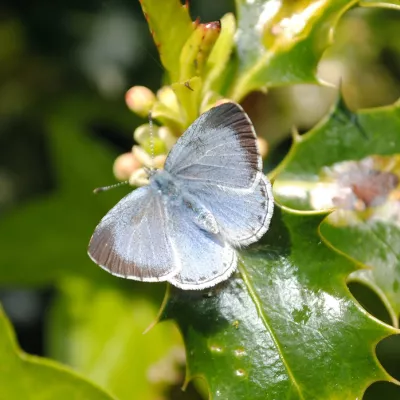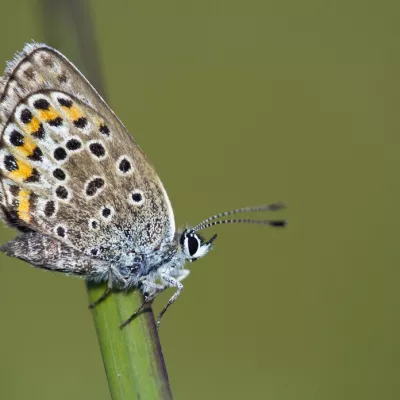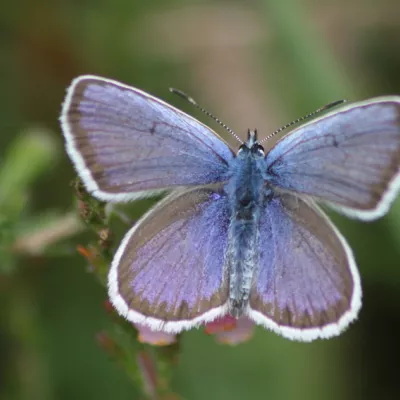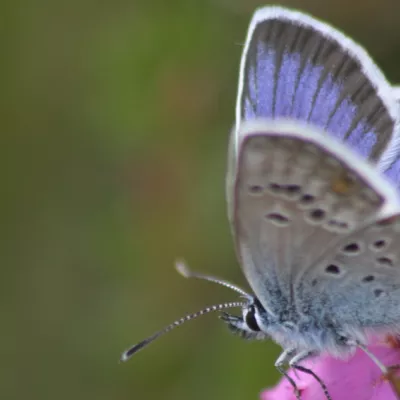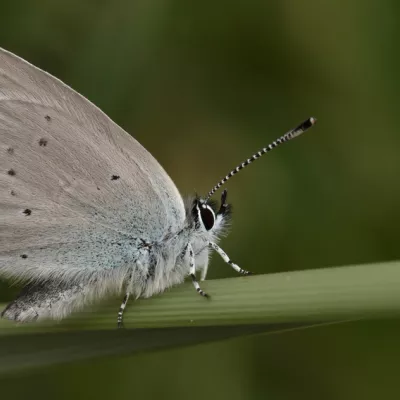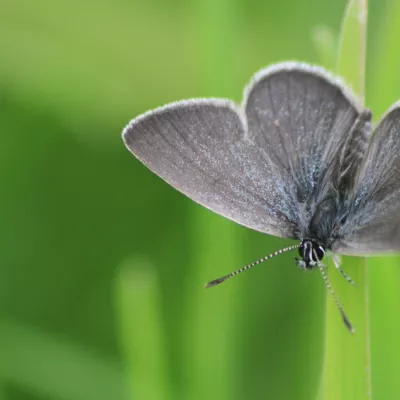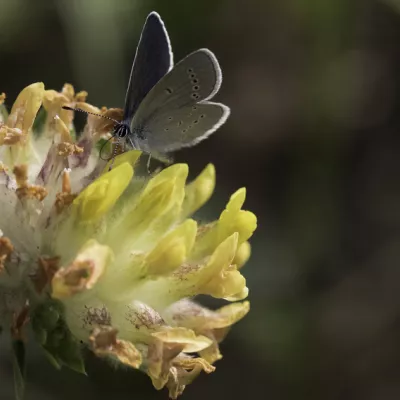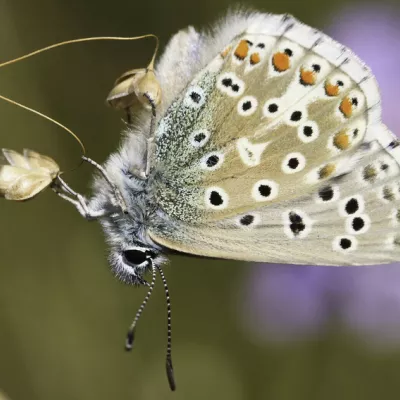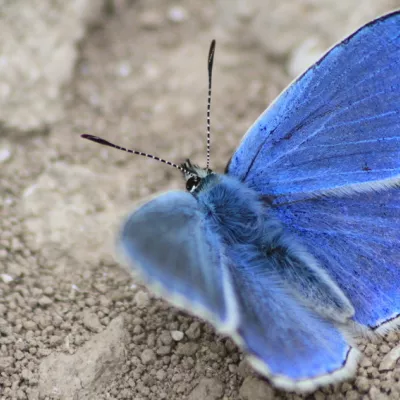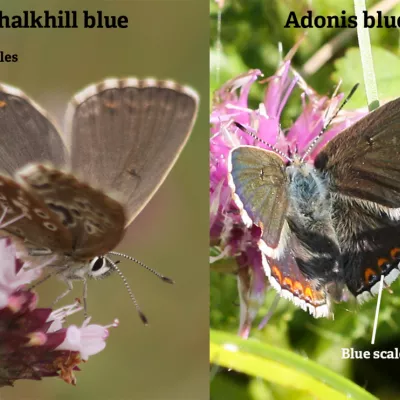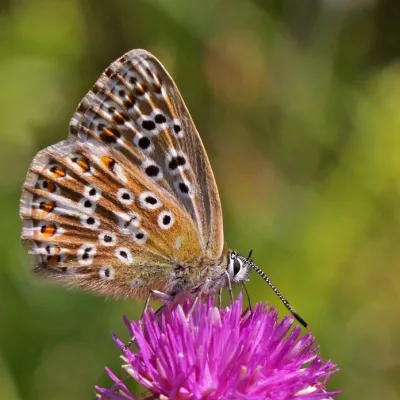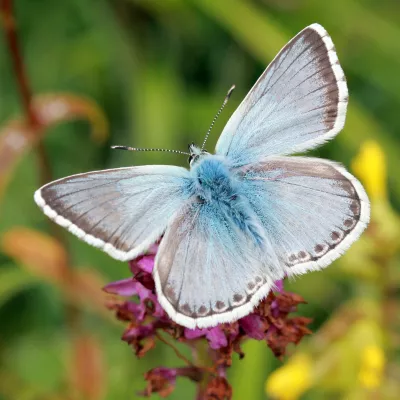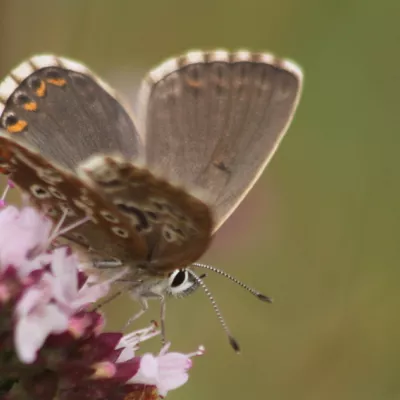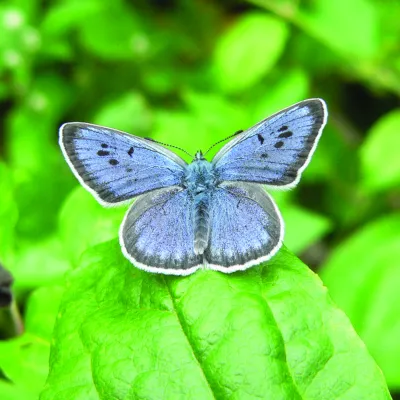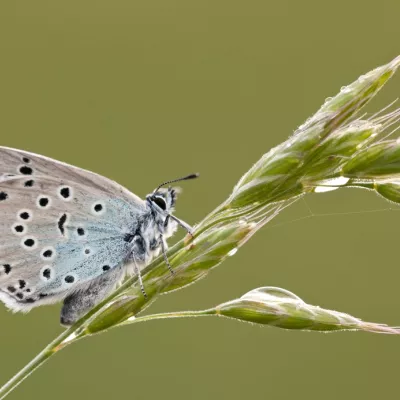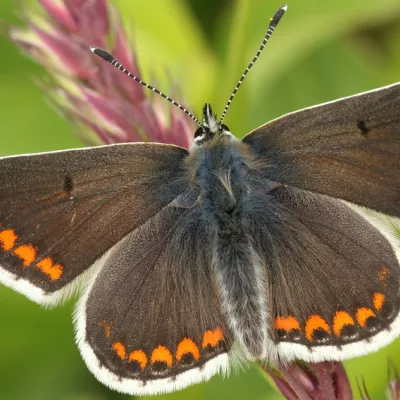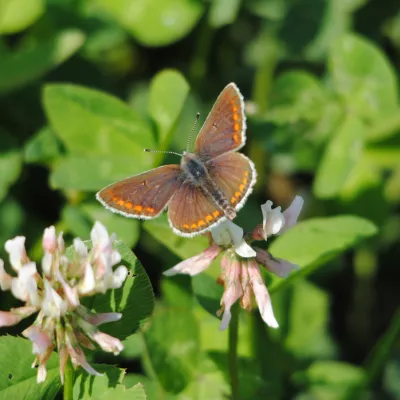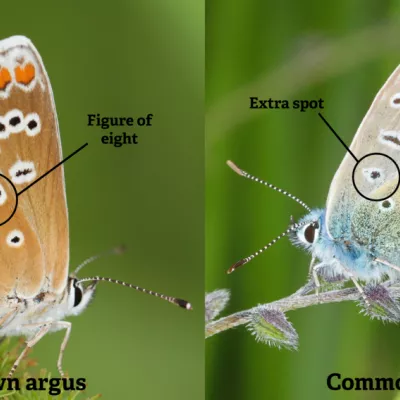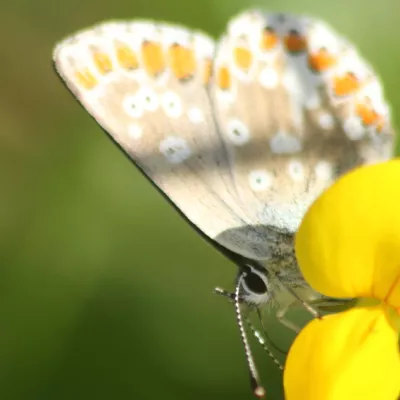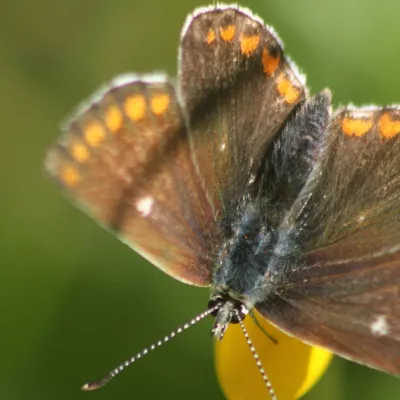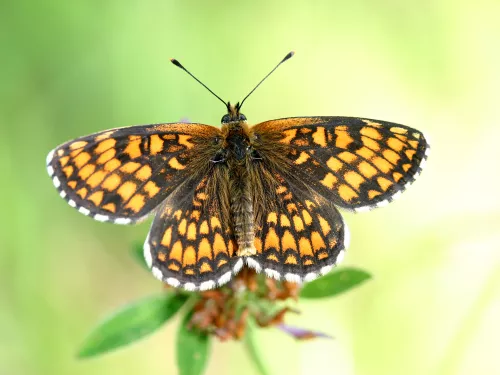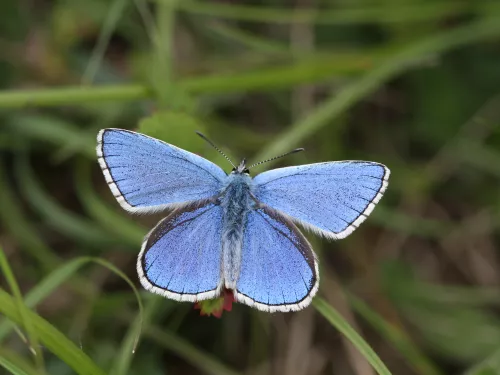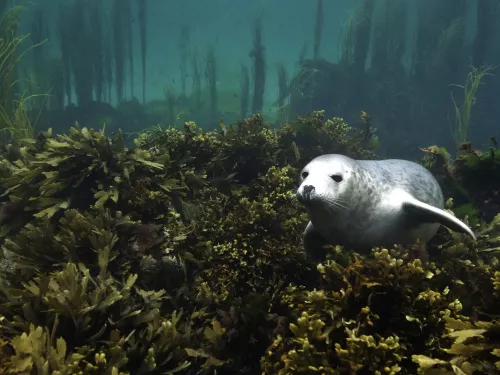Large blue
One of the most successful conservation stories in the UK, having been reintroduced following its extinction here in 1979. Despite its name, this isn’t a huge butterfly, with a wingspan of approximately 40mm-50mm – but it is the largest of the blues found in the UK. Both sexes are readily identified from other blues due to distinctive black markings on their upper forewings, resembling paw prints. The undersides have white bordered black spots, with no orange spotting.
The large blue is dependent on a red ant, Myrmica sabuleti, to complete its life cycle. At first, the caterpillars feed on wild thyme and marjoram. But after growing for a while, they purposefully seek out foraging red ants and, through mimicking an ant grub, are taken into the ant nest. Once inside, they become carnivores and feed on ant grubs until they pupate within the nest.
The large blue went extinct in the UK as it was not known that only Myrmica sabuleti could be fully deceived by the caterpillars. Other species of red ant will readily adopt them, but the ants are then able to detect that it’s an intruder and kill the caterpillar. Myrmica sabuleti is a warmth-loving species and requires short turf in the UK. Changes to grazing regimes and the loss of rabbits due to myxomatosis resulted in grass heights increasing and ground temperatures cooling, which led to Myrmica sabuleti being lost from the large blue’s habitat. Without the ant, the butterfly disappeared. Its rapid decline perplexed conservationists, as the caterpillar’s known foodplants were still present, as were red ants of different species. Once the mystery was solved, habitat restoration work was carried out at key sites to ensure Myrmica sabuleti was thriving, paving the way for the large blue to be reintroduced.
The butterfly has been successfully reintroduced (from Sweden) and can now be found in the Poldens of Somerset and the Cotswolds of Gloucestershire. In fact, the UK has the largest known population in the world. There is just one generation of large blue butterflies, which can be seen in June on south facing calcareous grasslands.
